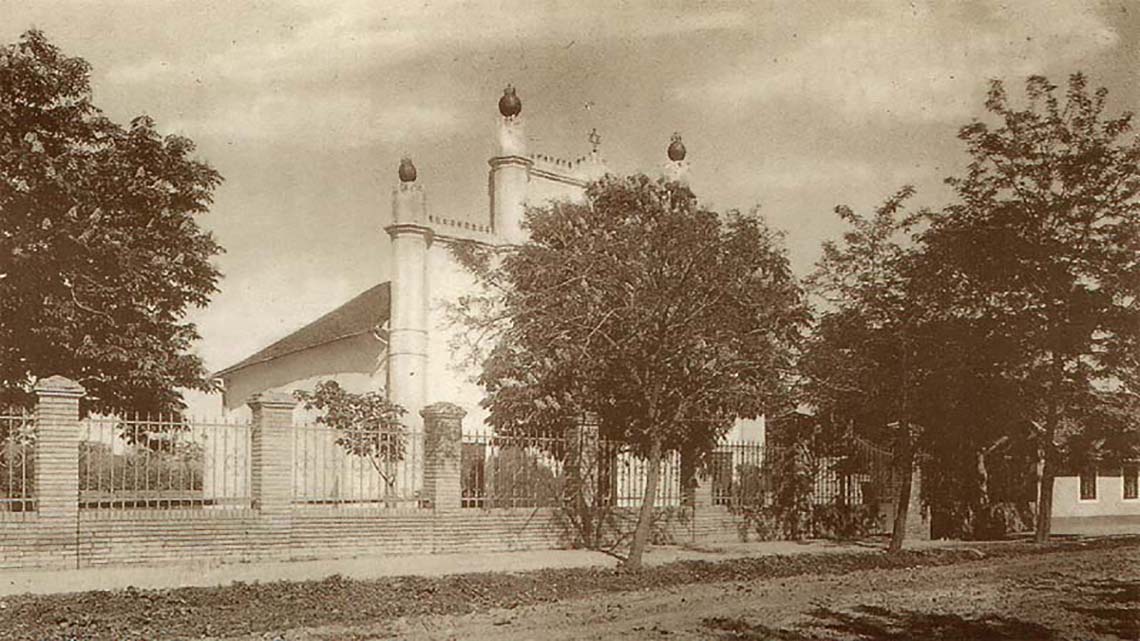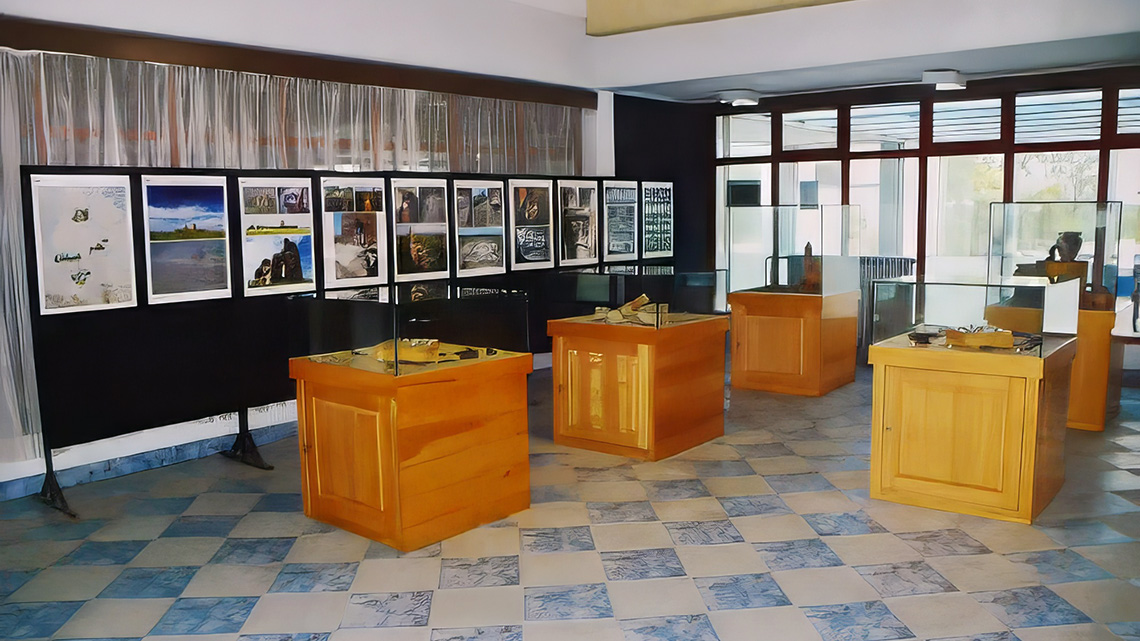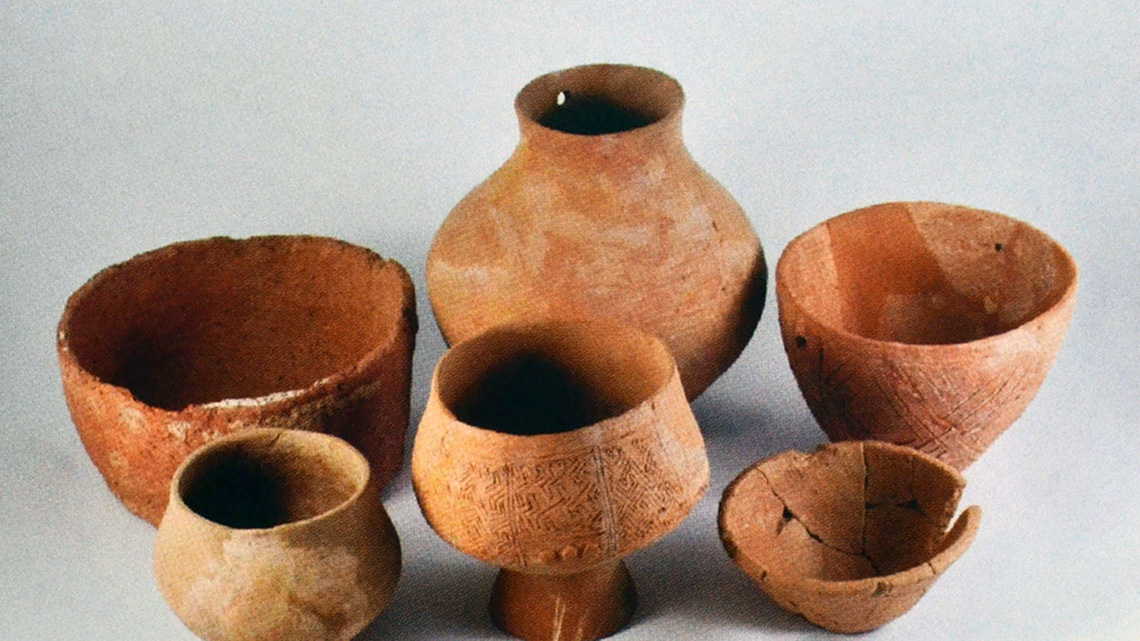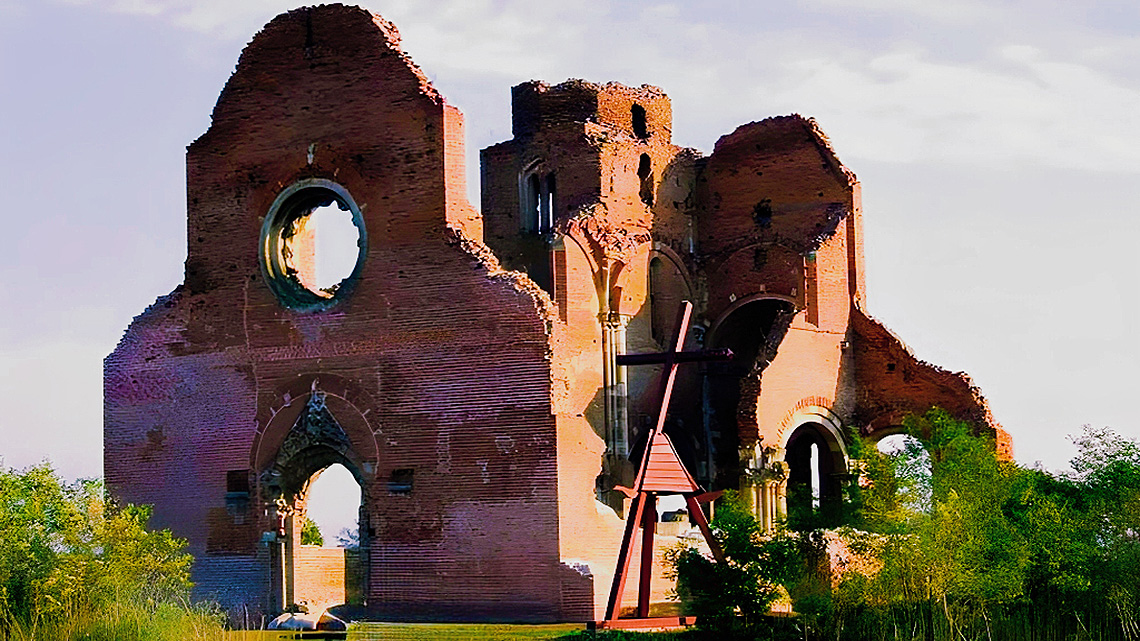Jews settled in Novi Bečej at the beginning of the 19th century. By 1845, they had their own Jewish community, indicating their economic strength. They were primarily engaged in trade. Historical documents note that in 1850, there were 154 Jews in the town.
The extent of their economic power is evident in the fact that by 1865, they could start the construction of a synagogue, with the final reconstruction and arrangement completed by 1871. They strategically built their place of worship on the road to Vranjevo from Novi Bečej, which were two administrative municipalities at that time. Although only one Jewish family lived in Vranjevo at that time, the Jews of Novi Bečej likely planned to settle in larger numbers in this predominantly Serbian settlement.
The synagogue had four pillars with endings resembling metal balls covered in copper sheeting. It was built with elements of the Romanesque style, similar to some smaller synagogues in Banat. The ritual bath, Mikve, was constructed in 1887, and in 1911, the building of the Jewish community and a smaller winter synagogue (the largest room within the community) were added.
At that time, Novi Bečej already had 220 Jews, with Izidor Šlezinger serving as the president of the Jewish community. The synagogue was located deep within the courtyard, enclosed by a metal fence with brick pillars.
During the outbreak of World War II, the synagogue served as a gathering center, not only for the Jews of Novi Bečej but also for those from the surrounding areas. Implementing an anti-Semitic policy, local Germans deported them by barge to Belgrade and Pančevo, where almost all of them were killed. The last rabbi of Novi Bečej was Filip M. Polak.
Since no Jews remained in the town, and the synagogue had deteriorated significantly during the war, the municipal authorities decided to demolish it in 1947. Today, a private house stands at that location at 16 Žarka Zrenjanina Street. The only evidence that a Jewish synagogue once stood there is the Star of David on the lower part of the metal gate.







